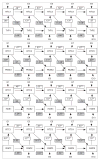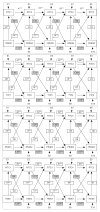Which came first: the readiness or the change? Longitudinal relationships between readiness to change and drinking among college drinkers
- PMID: 20854333
- PMCID: PMC3934960
- DOI: 10.1111/j.1360-0443.2010.03064.x
Which came first: the readiness or the change? Longitudinal relationships between readiness to change and drinking among college drinkers
Abstract
Aims: Although readiness to change (RTC) is cited as a key mechanism underlying drinking behavior change, empirical evidence supporting RTC as a predictor of college drinking has been mixed. Considering methodological limitations of previous studies, the current aim was to conduct a more comprehensive test of longitudinal relationships between readiness to change and college drinking.
Design: In this correlational, longitudinal study, we used a series of cross-lagged path analyses to test associations between RTC and college drinking outcomes over a 2-year period.
Setting: Data collection was conducted via online surveys on a university campus in the US Pacific Northwest.
Participants: Participants (n = 818; 58% women) were college students who reported at least one heavy-drinking episode in the past month and participated in a randomized controlled trial of personalized normative feedback interventions.
Measurements: Drinking quantity-frequency items and the Rutgers Alcohol Problem Index assessed drinking outcomes. The Readiness to Change Questionnaire assessed RTC.
Findings: For drinking-related problems, the best-fitting model included cross-lagged paths between RTC and subsequent drinking-related problems. For drinking quantity-frequency, best-fitting models also included the cross-lagged paths between drinking quantity-frequency and subsequent RTC. Higher RTC almost uniformly predicted higher subsequent levels of drinking and greater experience of drinking-related problems, and drinking quantity-frequency variables were primarily positive predictors of subsequent RTC.
Conclusions: Contrary to previous assumptions, 'the Readiness to Change Questionnaire' does not appear to be predictive of lower levels of subsequent drinking.
© 2010 The Authors, Addiction © 2010 Society for the Study of Addiction.
Conflict of interest statement
All authors declare that they have no conflicts of interest pertaining to this manuscript.
Figures



Comment in
-
Commentary on Collins et al. (2010): Why readiness to change may not predict behaviour.Addiction. 2010 Nov;105(11):1910-1. doi: 10.1111/j.1360-0443.2010.03184.x. Addiction. 2010. PMID: 21064256 No abstract available.
References
-
- Carey KB, Purnine DM, Maisto SA, Carey MP. Assessing readiness to change substance abuse: a critical review of instruments. Clin Psychol Sci Pract. 1999;6:245–66.
-
- Miller WR, Rollnick S. Motivational Interviewing: Preparing People for Change. New York: Guilford Press; 2002.
-
- DiClemente CC, Schlundt D, Gemmell L. Readiness and stages of change in addiction treatment. Am J Addict. 2004;13:103–19. - PubMed
-
- Prochaska JO, DiClemente CC, Norcross JC. In search of how people change: applications to addictive behavior. Am Psychol. 1992;47:1102–14. - PubMed
Publication types
MeSH terms
Grants and funding
LinkOut - more resources
Full Text Sources
Medical
Miscellaneous

